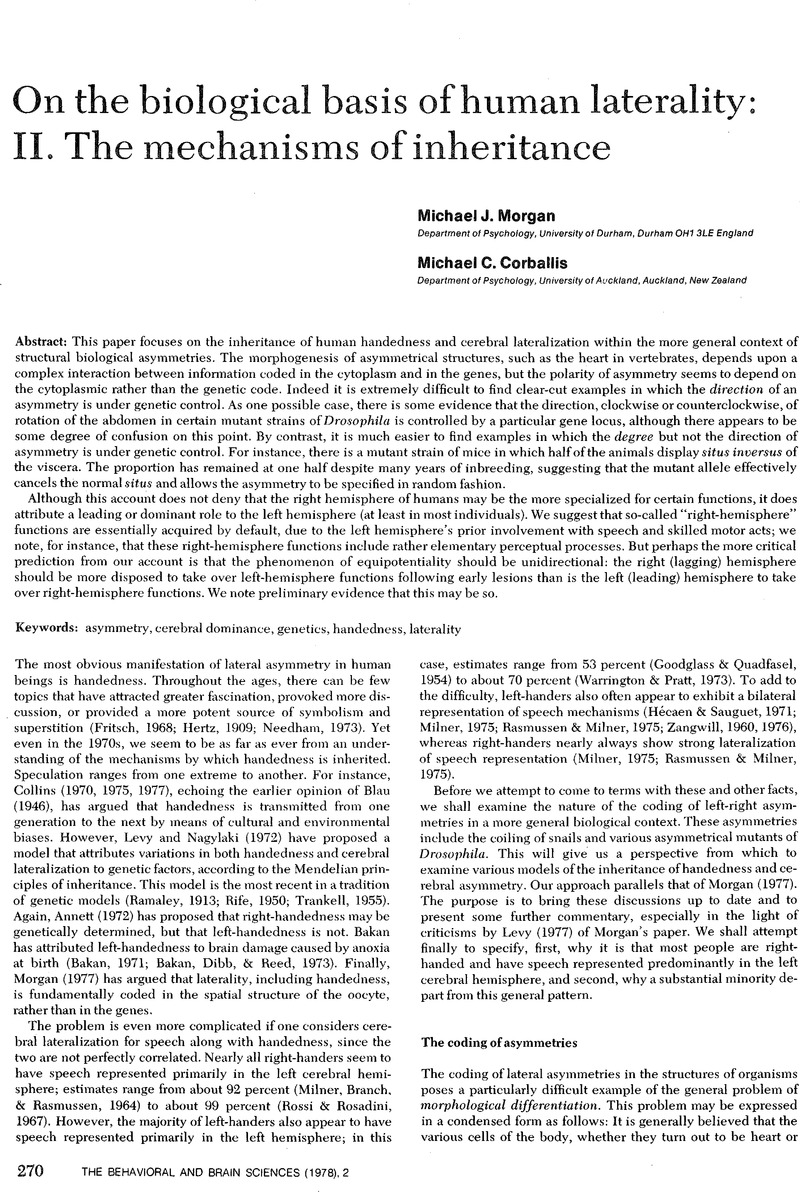No CrossRef data available.
Article contents
Prominence of the right side of the brain
Published online by Cambridge University Press: 04 February 2010
Abstract
An abstract is not available for this content so a preview has been provided. Please use the Get access link above for information on how to access this content.

Information
- Type
- Open Peer Commentary
- Information
- Copyright
- Copyright © Cambridge University Press 1978
References
REFERENCES
Cunningham, D. J. Contribution to the Surface Anatomy of the Cerebral Hemispheres. Royal Irish Academy, Dublin. 1892.Google Scholar
Ingalls, N. W.The parietal region in the primate brain. Journal of Comparative Neurology. 24:291–341. 1914.CrossRefGoogle Scholar
LeMay, M. Morphological cerebral asymmetries of modern man, fossil man, and non-human primate. In: Harnad, S. R., Steklis, H. K., and Lancaster, J. (eds.). Origins and Evolution of Language and Speech. Annals of the New York Academy of Science. 280:349–60. 1976.Google Scholar
LeMay, M.Asymmetries of the skull and handedness. Journal of Neurological Science. 32:243–53. 1977.Google Scholar
LeMay, M. and Culebras, A.Human brain - morphologic differences in the hemispheres demonstrable by carotid angiography. New England Journal of Medicine. 287:168–70. 1972.CrossRefGoogle Scholar
Shellsheer, J. L., and Smith, G. E.A comparative study of the endocranial casts of Sinanthropus. Philosophical Transactions of the Royal Society, London. B. 223:469–87. 1934.Google Scholar

